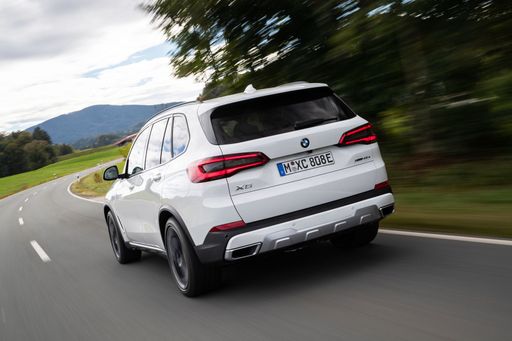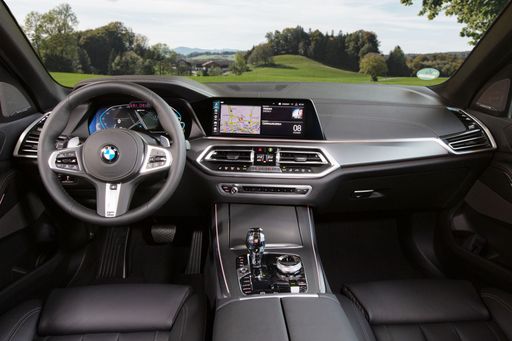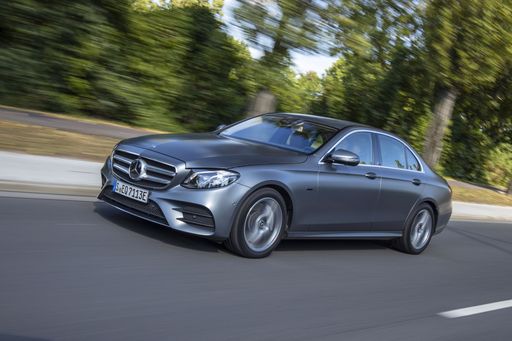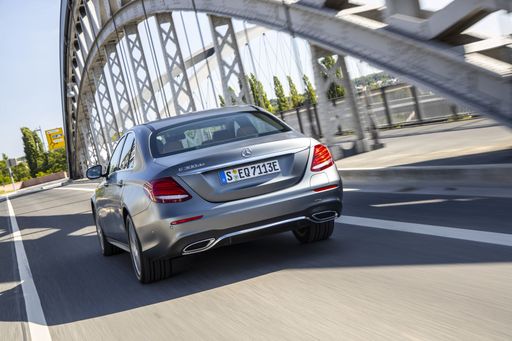BMW X5 vs Mercedes E Class – Which model is better for everyday use?
Compare performance, boot capacity, efficiency and price at a glance.
Find out which car is the better choice for you – BMW X5 or Mercedes E Class?
Costs and Efficiency:
When it comes to price and running costs, the biggest differences usually appear. This is often where you see which car fits your budget better in the long run.
Mercedes E Class has a significantly advantage in terms of price – it starts at 50500 £, while the BMW X5 costs 77100 £. That’s a price difference of around 26567 £.
Fuel consumption also shows a difference: BMW X5 manages with 0.80 L and is therefore clearly more efficient than the Mercedes E Class with 1.50 L. The difference is about 0.70 L per 100 km.
As for range, the Mercedes E Class performs slight better – achieving up to 116 km, about 11 km more than the BMW X5.
Engine and Performance:
Power, torque and acceleration say a lot about how a car feels on the road. This is where you see which model delivers more driving dynamics.
When it comes to engine power, the BMW X5 has a slight edge – offering 625 HP compared to 585 HP. That’s roughly 40 HP more horsepower.
In acceleration from 0 to 100 km/h, the BMW X5 is slight quicker – completing the sprint in 3.90 s, while the Mercedes E Class takes 4 s. That’s about 0.10 s faster.
There’s no difference in top speed – both reach 250 km/h.
Both models offer the same torque – 750 Nm.
Space and Everyday Use:
Cabin size, boot volume and payload all play a role in everyday practicality. Here, comfort and flexibility make the difference.
Both vehicles offer seating for 5 people.
In curb weight, Mercedes E Class is clearly perceptible lighter – 1810 kg compared to 2240 kg. The difference is around 430 kg.
In terms of boot space, the BMW X5 offers a bit more room – 650 L compared to 540 L. That’s a difference of about 110 L.
When it comes to payload, BMW X5 slight takes the win – 705 kg compared to 640 kg. That’s a difference of about 65 kg.
Who comes out on top?
Overall, the BMW X5 shows itself to be outperforms in nearly all aspects and secures the title of DriveDuel Champion.
It convinces with the more balanced overall package and proves to be the more versatile choice for everyday use.

BMW X5
BMW X5
The BMW X5 embodies a perfect blend of luxury and performance, offering a driving experience that is both dynamic and comfortable. Its elegant design is complemented by a spacious, high-quality interior that prioritises driver and passenger comfort. Advanced technology features ensure that the X5 meets the demands of modern drivers, providing both entertainment and safety on the road.
details @ press.bmwgroup.com
@ press.bmwgroup.com
 @ press.bmwgroup.com
@ press.bmwgroup.com
 @ press.bmwgroup.com
@ press.bmwgroup.com
 @ press.bmwgroup.com
@ press.bmwgroup.com
 @ press.bmwgroup.com
@ press.bmwgroup.com
Mercedes E Class
The Mercedes-Benz E-Class Saloon epitomises sophistication and innovation, offering a seamless blend of elegant design and cutting-edge technology. Its refined interior ensures exceptional comfort, making every journey a luxurious experience. The driving dynamics are impressively balanced, providing both agility and smoothness, perfect for both city driving and long-distance cruising.
details @ group-media.mercedes-benz.com
@ group-media.mercedes-benz.com
 @ group-media.mercedes-benz.com
@ group-media.mercedes-benz.com
 @ group-media.mercedes-benz.com
@ group-media.mercedes-benz.com

|

|
|
|
|
Costs and Consumption |
|
|---|---|
|
Price
77100 - 143500 £
|
Price
50500 - 119700 £
|
|
Consumption L/100km
0.8 - 12.8 L
|
Consumption L/100km
1.5 - 7.5 L
|
|
Consumption kWh/100km
-
|
Consumption kWh/100km
-
|
|
Electric Range
105 km
|
Electric Range
101 - 116 km
|
|
Battery Capacity
25.70 kWh
|
Battery Capacity
21.20 kWh
|
|
co2
19 - 289 g/km
|
co2
39 - 172 g/km
|
|
Fuel tank capacity
69 - 83 L
|
Fuel tank capacity
50 - 66 L
|
Dimensions and Body |
|
|---|---|
|
Body Type
SUV
|
Body Type
Sedan
|
|
Seats
5
|
Seats
5
|
|
Doors
5
|
Doors
4
|
|
Curb weight
2240 - 2495 kg
|
Curb weight
1810 - 2390 kg
|
|
Trunk capacity
500 - 650 L
|
Trunk capacity
370 - 540 L
|
|
Length
4935 - 4948 mm
|
Length
4949 - 4959 mm
|
|
Width
2004 - 2015 mm
|
Width
1880 mm
|
|
Height
1755 - 1765 mm
|
Height
1468 - 1480 mm
|
|
Max trunk capacity
1720 - 1870 L
|
Max trunk capacity
-
|
|
Payload
565 - 705 kg
|
Payload
530 - 640 kg
|
Engine and Performance |
|
|---|---|
|
Engine Type
Plugin Hybrid, Petrol MHEV, Diesel MHEV
|
Engine Type
Petrol MHEV, Plugin Hybrid, Diesel MHEV
|
|
Transmission
Automatic
|
Transmission
Automatic
|
|
Transmission Detail
Automatic Gearbox
|
Transmission Detail
Automatic Gearbox
|
|
Drive Type
All-Wheel Drive
|
Drive Type
Rear-Wheel Drive, All-Wheel Drive
|
|
Power HP
298 - 625 HP
|
Power HP
186 - 585 HP
|
|
Acceleration 0-100km/h
3.9 - 6.1 s
|
Acceleration 0-100km/h
4 - 8.5 s
|
|
Max Speed
233 - 250 km/h
|
Max Speed
222 - 250 km/h
|
|
Torque
540 - 750 Nm
|
Torque
320 - 750 Nm
|
|
Number of Cylinders
6 - 8
|
Number of Cylinders
4 - 6
|
|
Power kW
219 - 460 kW
|
Power kW
137 - 430 kW
|
|
Engine capacity
2993 - 4395 cm3
|
Engine capacity
1993 - 2999 cm3
|
General |
|
|---|---|
|
Model Year
2023 - 2025
|
Model Year
2024 - 2025
|
|
CO2 Efficiency Class
B, G
|
CO2 Efficiency Class
E, F, B, D
|
|
Brand
BMW
|
Brand
Mercedes-Benz
|
Is the BMW X5 offered with different drivetrains?
The BMW X5 is available as All-Wheel Drive.
The prices and data displayed are estimates based on German list prices and may vary by country. This information is not legally binding.
